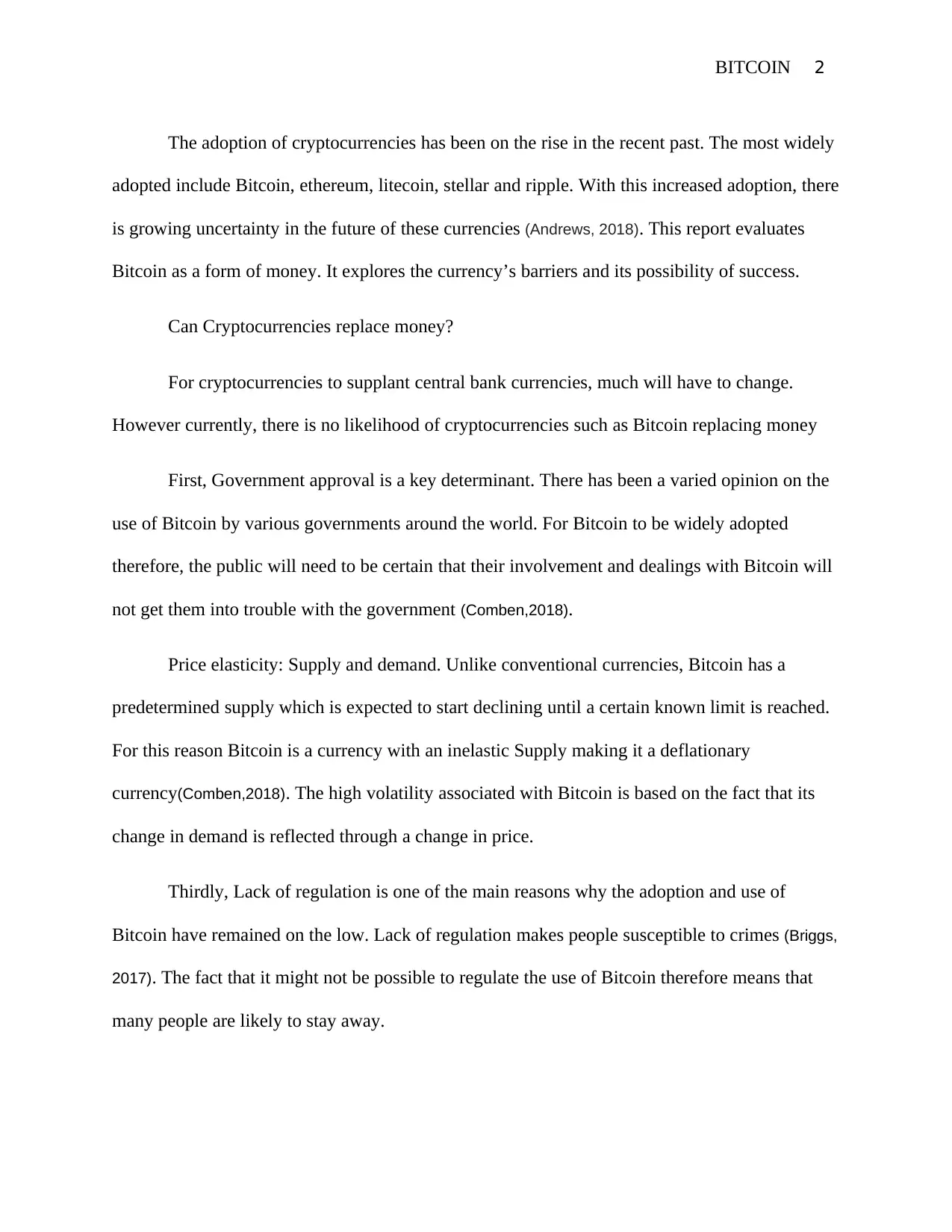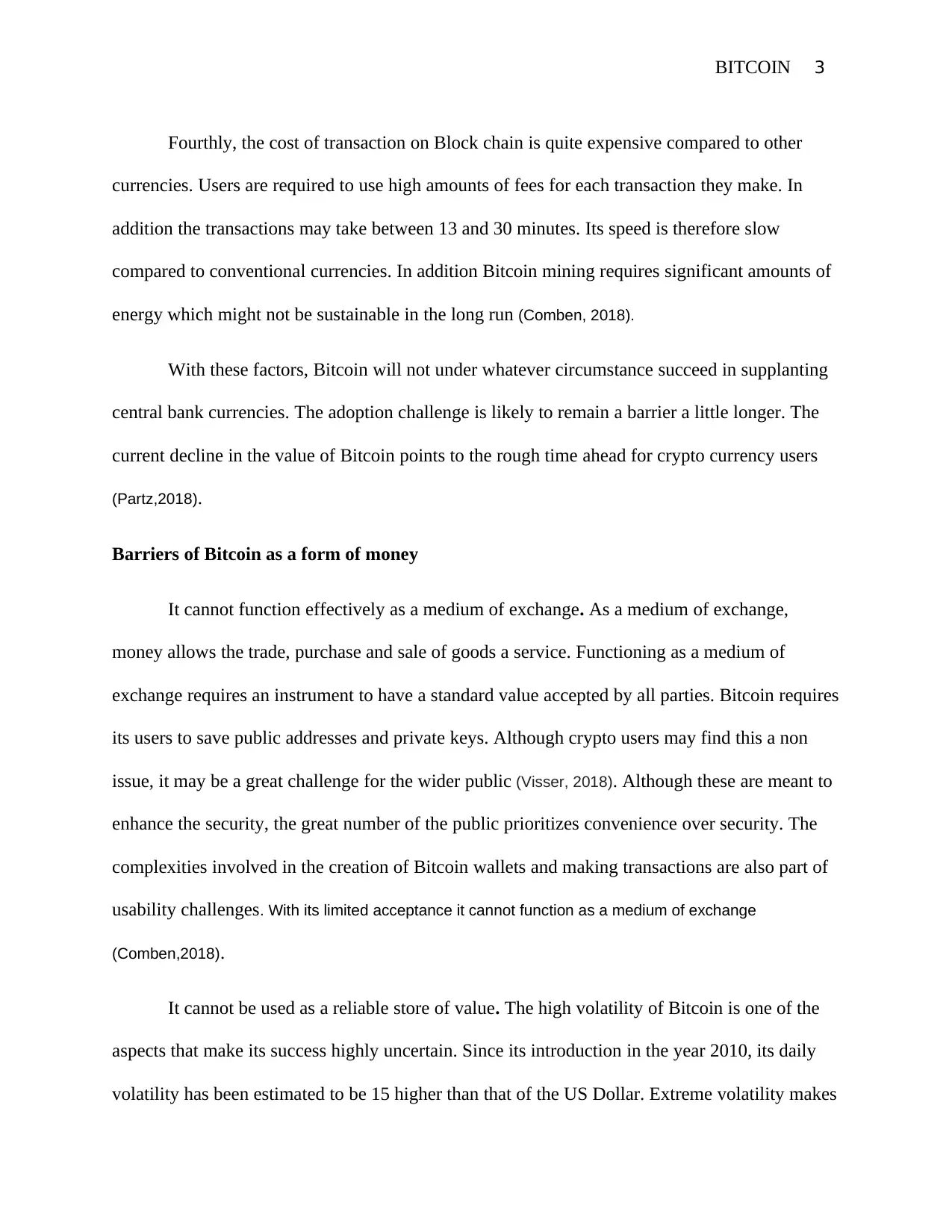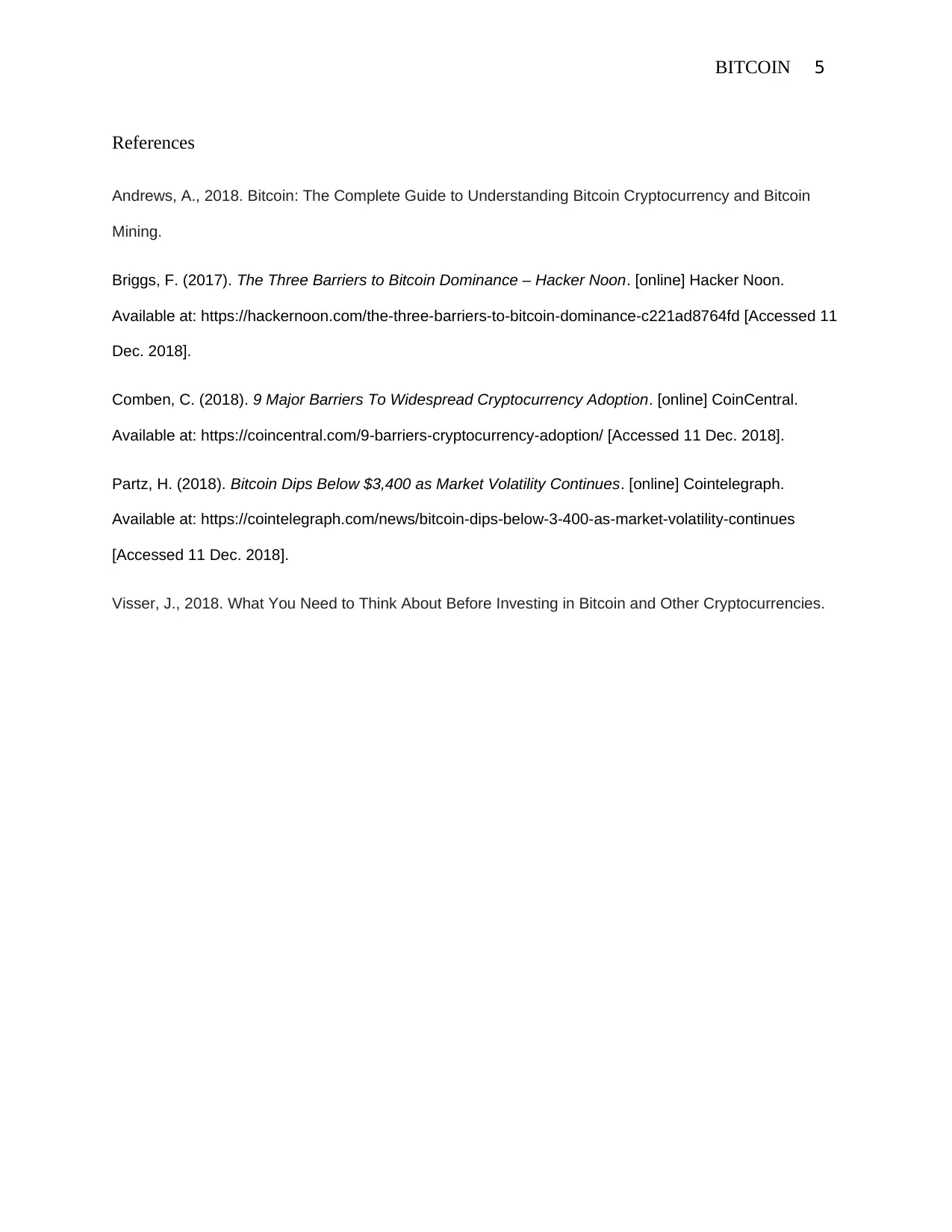Bitcoin's Viability: Barriers to Adoption and Potential for Success
VerifiedAdded on 2023/05/27
|5
|845
|373
Report
AI Summary
This report provides an evaluation of Bitcoin as a form of money, examining its potential and the challenges it faces. The report begins by acknowledging the rising adoption of cryptocurrencies, including Bitcoin, and the associated uncertainties about their future. It explores whether cryptocurrencies can replace traditional currencies, focusing on key factors such as government approval, price elasticity influenced by supply and demand dynamics, regulatory hurdles, and transaction costs. The report highlights the barriers to Bitcoin's widespread adoption, including its limited acceptance as a medium of exchange due to usability issues and its unsuitability as a reliable store of value due to high volatility. The analysis concludes that Bitcoin faces significant obstacles to supplanting central bank currencies, with the current decline in its value suggesting a challenging period for cryptocurrency users. References to relevant sources are also included.
1 out of 5












![[object Object]](/_next/static/media/star-bottom.7253800d.svg)